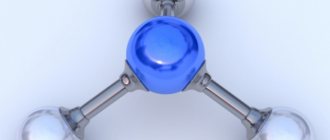Many people suffer from a disease such as hemorrhoids. It brings a lot of unpleasant sensations, and also forces you to see a doctor to prescribe treatment. True, not everyone turns to doctors after the first signs appear, hoping that the problem will go away on its own. That is why cases of advanced hemorrhoids are becoming more and more common. One of the drugs prescribed for hemorrhoids is Detralex, reviews of the drug are positive.
Causes of hemorrhoids
Detralex for hemorrhoids
Hemorrhoids develop when many unfavorable factors are present, due to which the problem worsens. The main causes of hemorrhoids include:
- Problems with blood vessels. Very often, people experience serious problems with the circulatory system, which are manifested by blockage of blood vessels, as well as weakness of their walls, which subsequently leads to the development of many diseases
- Trauma that can cause internal damage and then inflammation of the hemorrhoids
- Problems with stool, which can include both constipation and diarrhea
- Not an active lifestyle. Most often these are people who lead a sedentary lifestyle or spend a lot of time driving a vehicle.
- Poor nutrition, namely eating spicy and fatty foods
- Weight lifting
- Heredity
Despite the fact that almost every person knows what causes hemorrhoids, few people pay attention to it. And therefore, the number of people suffering from this disease is growing every year.
Symptoms of hemorrhoids
It is customary to distinguish between two types of hemorrhoids - internal and external, each of which has several similar and several different symptoms. So, internal hemorrhoids are characterized by the presence of symptoms such as:
- Feeling of discomfort in the anal area
- Itching and burning
- Sensation of the presence of a foreign body in the anus. This feeling appears due to the fact that hemorrhoids increase significantly in size.
- Bleeding, which most often occurs with strong straining. Often the bleeding is very heavy, but in most cases it is a small drop on the toilet paper
The following symptoms are typical for external hemorrhoids:
- Unpleasant sensations in the anal area. This may include itching, a feeling of heaviness
- A burning sensation that is difficult to relieve by any means
- Bleeding, which is provoked by damage to swollen and inflamed vessels. This usually occurs with sudden movements, as well as during constipation.
- Nodes falling out. This can happen either once or continuously. Many patients note that the nodes can be adjusted independently, and there is no pain. However, it is worth knowing that straightening the knots into place does not provide any guarantee that they will not fall out again
- Pain that may radiate to the lumbar region
It is impossible to say which of the above symptoms will appear first, since each organism is individual and tolerates the disease in its own way.
Treatment of hemorrhoids, Detralex
It is impossible not to treat hemorrhoids!
As mentioned above, hemorrhoids should be treated immediately after the first symptoms appear. But, as a rule, rarely does anyone turn to doctors right away, and therefore they have to treat more severe stages. Treatment can occur in two ways - surgery and medication. Of course, almost all doctors try to treat hemorrhoids conservatively, avoiding unnecessary surgical intervention, but there are cases when this is simply necessary.
One of the most effective drugs used in the treatment of hemorrhoids is Detralex. It has established itself as a very effective remedy with a minimum of side effects, which can improve well-being both during acute and chronic hemorrhoids. The medicine contains two main components - diosmin and hesperidin. Diosmin very well relieves all symptoms of inflammation, such as swelling, pain and redness, due to its good property of reducing capillary permeability. In addition, it strengthens blood vessels, causing blood to circulate better. Hesperidin is an excellent assistant for diosmin and strengthens capillaries, as well as weak vessel walls.
Clinic for the treatment of hemorrhoids in Moscow
The multidisciplinary clinic "MedicCity" employs highly professional coloproctologists who can offer you various methods of treating hemorrhoids.
After reading reviews about hemorrhoid treatment and reviews about hemorrhoid removal surgery, you can form your own opinion about the procedure. Our clinic performs various operations to treat hemorrhoids, including desarterization. Prices for proctological manipulations are average for the capital.
You can see prices for surgery to remove hemorrhoids here.
Properties of Detralex and indications for use
The drug Detralex has a complex effect, thanks to which it is possible to quickly solve the problem with blood vessels and hemorrhoids. The drug has the following properties:
- Significantly improves the tone of the veins, which helps improve the general condition of hemorrhoids, and also eliminates the occurrence of problems in the future
- Strengthens venous walls
- Helps very well in the regeneration of vascular tissues
- Helps remove swelling fluid
- Eliminates severe inflammatory processes
- Significantly improves blood supply in the main vessels
- Reduces capillary fragility
- Eliminates stagnation
In addition to its main properties, Detralex helps to get rid of pain that occurs as a result of vascular fragility and inflammation. Due to its main properties, the drug is recommended to be taken:
- For acute hemorrhoids, both internal and external
- For chronic hemorrhoids
- For general strengthening of veins and vessel walls
Many specialists prescribe Detralex during the treatment of hemorrhoids precisely because of its good healing properties.
Surgery for hemorrhoids
MedicCity uses innovative technologies and the latest methods of treating hemorrhoids, including the following:
- hemorrhoidectomy;
- latex ligation of hemorrhoids;
- disarterization (hemorrhoidal disarterization);
- sclerosis of hemorrhoids;
- coagulation of hemorrhoids (laser treatment of hemorrhoids).
Preparation for surgery includes:
- consultation with a colonoproctologist;
- laboratory and functional diagnostics;
- refusal of blood thinning pills;
- purgation.
Hemorrhoidectomy
Hemorrhoidectomy is the radical removal of pathological hemorrhoids with ligation of blood vessels. For many years, hemorrhoidectomy has been the gold standard for removing existing hemorrhoids, but hemorrhoidectomy surgery is not a minimally invasive procedure.
Hemorrhoidectomy surgery is used:
- with constant prolapse of the patient’s internal nodes;
- with frequent exacerbation of hemorrhoids in middle-aged patients;
- for stage 3 hemorrhoids complicated by thrombosis of hemorrhoids;
- for hemorrhoids stage 4;
- at stage 2 of hemorrhoids, complicated by fistulas and chronic fissures.
Hemorrhoidectomy is performed using a scalpel, coagulator or laser. There are open hemorrhoidectomy and closed hemorrhoidectomy.
Open hemorrhoidectomy or Milligan-Morgan hemorrhoidectomy was named after the two doctors who first performed this operation in 1935.
Open hemorrhoidectomy is so called because the operation involves healing the edges of the wound in an open manner.
Possible complications with open hemorrhoidectomy
The following complications may occur after hemorrhoidectomy:
- bleeding associated with poor hemostasis or the fact that after electrocoagulation the crust sealing the vessel has fallen off;
- temporary urinary retention (more common in men who have undergone epidural anesthesia);
- delayed bowel movement;
- anal fissure, which occurs as a result of injury to an unhealed wound in the rectum by hard feces;
- rectal fistula;
- reduction in the diameter of the anal canal (stricture);
- recurrence of hemorrhoids (fortunately, this is quite rare);
- the appearance of a hematoma, an accumulation of blood under the mucous membrane of the anal canal;
- involuntary release of urine or feces (see anal sphincter incontinence) due to damage to the muscles and ligaments in the anal canal;
- rectal prolapse;
- intestinal infection.
Closed hemorrhoidectomy
Closed hemorrhoidectomy can be performed for stage 3 or 4 hemorrhoids in large hemorrhoids.
If during an open hemorrhoidectomy the node is cut off and the wound itself remains open, then during a closed operation all wounds are sutured.
Complications during closed hemorrhoidectomy;
- feeling of pain after surgery;
- bleeding;
- urinary retention;
- the appearance of an abscess;
- seam divergence;
- tissue swelling.
Recovery period after hemorrhoidectomy
It will take approximately 5-6 weeks for a patient to fully recover after an open hemorrhoidectomy, and a little more than 3 weeks after a closed hemorrhoidectomy.
The patient may experience pain for 2-3 days after surgery, so painkillers can be used. To avoid damaging unhealed wounds with hard feces during bowel movements, it is recommended to drink only liquids on the first day.
For the rest of the postoperative period, you should use gentle food: liquid or pureed food, drink more liquid, eat 5-6 times a day in small portions, exclude coarse, spicy, fatty, fried foods.
After reading reviews about hemorrhoidectomy surgery, do not rush to make a decision. The choice of treatment method should be made by your colonoproctologist based on examination and examination.
Ligation of hemorrhoids
Ligation of hemorrhoids is a gentle, minimally invasive technique for the treatment of hemorrhoids.
Ligation of hemorrhoids is resorted to when the patient does not benefit from conservative therapy. This is an outpatient treatment for hemorrhoids. The procedure does not require hospitalization.
Latex ligation of hemorrhoids is used for internal hemorrhoids of 2 and 3 degrees. At this stage, the nodes are already clear and formed, they cause the patient a lot of trouble and are accompanied by pain in the anal area, bleeding, burning sensation, and anal itching.
With the help of ligation of hemorrhoids, you can not only get rid of these symptoms, but also eliminate the bleeding hemorrhoid.
The essence of the method
The procedure for ligating hemorrhoids involves inserting an anoscope into the rectal area, grasping the node with a ligator and pulling a latex ring onto the stem of the hemorrhoid. Latex rings are made of lightweight, durable and hypoallergenic material.
The latex ring tightens the leg of the knot, it is deprived of nutrition and dries out. A scar forms in place of the former node. The entire procedure for latex ligation of a hemorrhoid is virtually painless and takes only 5-10 minutes.
Immediately after surgery to remove hemorrhoids, the patient can return home and begin work the next day.
Desarterization of hemorrhoids
Desarterization is a unique method of treating hemorrhoids. With the help of disarterization, you can not only eliminate problem nodes, but also prevent the emergence of new ones.
Desarterization of hemorrhoids allows you to get rid of hemorrhoids once and for all. This most gentle operation is performed in 1 day, on an outpatient basis, during sleep (using sedation), without pain and hospitalization. The manipulation does not disrupt the patient’s usual rhythm of life and does not deprive him of his ability to work.
Colonoproctologist “MedicCity” Rustam Kazimovich Abdullaev talks about all the intricacies of treating hemorrhoids using the method of disarterization of hemorrhoids in the “Doctors” program (TV-Center channel).
The essence of the disarterization method
With the help of disarterization of hemorrhoids, the flow of arterial blood to the hemorrhoid is stopped. The procedure is performed under the control of Doppler ultrasound, with the help of which the surgeon finds the problem node and ties it.
Unlike other types of treatment for hemorrhoids, disarterization of hemorrhoids helps in the treatment of advanced cases, even stage 4 hemorrhoids. The technique of hemorrhoidal disarterization can combine different options:
- Desarterization using HAL technology;
- Desarterization using RAR technology.
The ultrasound-guided disarterization technique is one of the most reliable minimally invasive methods for treating hemorrhoids. At the MedikCity clinic, this treatment method is performed using a modern AMI HAL-Doppler II device.
Hemorrhoids of the 2nd degree can be treated only by ligation of the arteries, and hemorrhoids of the 3rd and 4th degrees are a combination of ligation of the arteries and tightening. Using the high-precision HAL Doppler device, rapid disarterization of hemorrhoidal arteries is carried out with minimal risk to the patient's health.
After disarterization, the patient may experience some discomfort in the operated area. This can be helped by taking painkillers. You can see reviews of disarterization and other proctological procedures here.
Sclerosation of hemorrhoids
Sclerotherapy is used to treat small grade 1 and 2 hemorrhoids.
Preparation for surgery to harden hemorrhoids involves careful bowel movements. Otherwise, bowel movement immediately after surgery may cause a decrease in the concentration of the solution and worsen the treatment.
The essence of the method of sclerotherapy of hemorrhoids
The method of sclerosing hemorrhoids is based on the introduction of a sclerosing substance into the lumen of the hemorrhoid, due to which the vascular wall is destroyed, and the vein or hemorrhoid is sclerosed (glued together).
The advantages of this operation for hemorrhoids include the simplicity and accessibility of the intervention, the almost complete absence of contraindications, the rapid effect and the duration of the result.
It is not advisable to do sclerotherapy for hemorrhoids with large nodes, if there is an anal fissure, or inflammation of the intestines (for example, proctitis).
Coagulation of hemorrhoids
This minimally invasive and fairly simple method of treating hemorrhoids represents an alternative to classic surgery to remove hemorrhoids.
When coagulating hemorrhoids, an energy flow impacts the problem area, causing the veins and hemorrhoids to burn, which leads to atrophy of the node. Depending on the type of energy used to process the hemorrhoidal node to be removed, a distinction is made between laser, infrared and electrocoagulation.
Benefits of coagulation of hemorrhoids
- painlessness of the procedure;
- short duration of the therapeutic effect (the procedure lasts no more than 15 minutes);
- instant effect (the next day you can return to your usual routine and go to work);
- no blood loss.
Contraindications and side effects
Detralex: release form - tablets
There are no special contraindications for the use of Detralex. True, those people who have an individual intolerance to some substances included in the drug are prohibited from using it, despite a lot of positive properties. Also, scientists have not fully studied the use of the drug during pregnancy, which is why it is recommended to use it only in cases where it will bring more benefit to the mother than harm to the child. Side effects while taking Detralex include:
- Headache and dizziness, which occur quite rarely
- General malaise
- Nausea, which can be either mild or progress to vomiting
- Diarrhea
- Hives, itching and burning. They are direct signs of an allergic reaction to one of the components of the drug.
- If at least one of the above side effects occurs while taking Detralex, you must immediately tell your doctor about it so that he can decide whether to stop or continue taking it.
Reviews about Detralex are mostly positive. Those who have used it note that after some time the effect is noticeable, and even after taking it, hemorrhoids do not return. Detralex is very widely used during the treatment of hemorrhoids. True, before prescribing it, the specialist makes sure that there are no contraindications, because despite the positive effect of the medicine, side effects may occur.
Detralex tablets 1000 mg, 30 pcs.
Manufacturer
Servier/Serdix, Russia
Compound
1 tablet contains purified micronized flavonoid fraction 1000 mg, including:
- diosmin 900 mg (90%)
- flavonoids in terms of hesperidin 100 mg (10%)
30 tablets for oral administration per package
pharmachologic effect
Detralex has venotonic and angioprotective properties. The drug reduces the distensibility of veins and venous stagnation, reduces capillary permeability and increases their resistance. The results of clinical studies confirm the pharmacological activity of the drug in relation to indicators of venous hemodynamics.
A statistically significant dose-dependent effect of the drug Detralex was demonstrated for the following venous plethysmographic parameters: venous capacity, venous distensibility, venous emptying time.
The optimal dose-effect ratio is observed when taken at a dose of 1000 mg per day.
Detralex increases venous tone: using venous occlusion plethysmography, a decrease in the time of venous emptying was shown. In patients with signs of severe microcirculation disorders, after treatment with Detralex there is a (statistically significant, compared to placebo) increase in capillary resistance, assessed by angiostereometry.
The therapeutic effectiveness of the drug Detralex has been proven in the treatment of chronic diseases of the veins of the lower extremities, as well as in the treatment of hemorrhoids.
Indications
Detralex is indicated for the treatment of symptoms of chronic venous diseases (elimination and relief of symptoms).
- Treatment of symptoms of venous-lymphatic insufficiency: pain;
- spasms of the lower extremities;
- feeling of heaviness and fullness in the legs;
- "tired" legs.
- swelling of the lower extremities;
Contraindications
- Hypersensitivity to the active components or excipients included in the drug.
- Due to the lack of data regarding the excretion of the drug in breast milk, taking the drug is not recommended for nursing women.
Side effects
Side effects of Detralex® observed during clinical trials were mild. Mostly gastrointestinal disorders were observed (diarrhea, dyspepsia, nausea, vomiting).
While taking the drug Detralex®, the following side effects were reported in the following gradation: very often (≥1/10), often (≥1/100, <1/10), infrequently (≥1/1000, <1/100) , rare (≥1/10,000, <1/1000), very rare (<10,000), unspecified frequency (frequency cannot be calculated from available data).
From the side of the central nervous system: rarely - dizziness, headache, general malaise.
From the gastrointestinal tract: often - diarrhea, dyspepsia, nausea, vomiting; infrequently - colitis; unspecified frequency - abdominal pain.
From the skin: rarely - rash, itching, urticaria; unspecified frequency - isolated swelling of the face, lips, eyelids; in exceptional cases - angioedema.
The patient should be informed that if any symptoms appear during therapy, incl. Undesirable reactions and sensations not mentioned in the instructions, as well as changes in laboratory parameters, should be reported to your doctor.
Interaction
There were no drug interactions with Detralex®.
The attending physician should be informed about all medications the patient is taking.
How to take, course of administration and dosage
The drug is prescribed orally.
The recommended dose for venous-lymphatic insufficiency is 1 tablet/day, preferably in the morning, during meals.
The score on the tablet is intended solely for scoring purposes to make it easier to swallow.
The duration of treatment can be several months (up to 12 months). In case of recurrence of symptoms, on the recommendation of a doctor, the course of treatment can be repeated.
The recommended dose for acute hemorrhoids is 3 tablets/day (1 tablet in the morning, afternoon and evening) for 4 days, then 2 tablets/day (1 tablet in the morning and evening) for the next 3 days.
The recommended dose for chronic hemorrhoids is 1 tablet/day.
Overdose
No cases of overdose have been described.
In case of overdose of the drug, the patient should immediately seek medical help.
Special instructions
Before starting to use the drug Detralex®, the patient is recommended to consult a doctor.
In case of exacerbation of hemorrhoids, the prescription of Detralex® does not replace the specific treatment of other anal disorders. The duration of treatment should not exceed the periods specified in the “Dosage regimen” section. If the symptoms do not disappear after the recommended course of therapy, you should be examined by a proctologist, who will select further therapy.
In the presence of venous circulation disorders, the maximum effect of treatment is ensured by combining therapy with a healthy (balanced) lifestyle: it is advisable to avoid long exposure to the sun, long periods of standing, and it is also recommended to reduce excess body weight. Walking and, in some cases, wearing special stockings helps improve blood circulation.
The patient should immediately consult a doctor if the condition worsens or does not improve during treatment.
The drug does not affect the ability to drive vehicles or perform work that requires high speed mental and physical reactions.
Active substance
Hesperidin, Diosmin
Dosage form
pills
Purpose
For adults as prescribed by a doctor, Pregnant women as prescribed by a doctor
Indications
Trophic ulcers, Hemorrhoids, Varicose veins
Barcode and weight
Barcode: 4607159861641, 0104607159861 Weight: 0.035 kg







